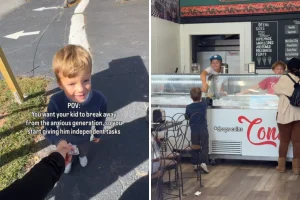From Tourist Traps to Cemetery Travels: The Rise of Graveyard Tourism
In an intriguing shift away from conventional travel experiences, a growing number of tourists are rejecting the predictable “tick-box” approach to sightseeing. Rather than joining the crowds at popular landmarks and tourist hotspots, these travelers are seeking more meaningful experiences by exploring historical cemeteries and burial grounds. This emerging trend reflects a deeper desire for authentic cultural immersion, historical understanding, and contemplative experiences that transcend the typical tourist itinerary.
The appeal of cemetery tourism lies in its unique combination of art, history, architecture, and human stories. Unlike overcrowded tourist attractions where visitors often feel rushed and disconnected, graveyards offer a peaceful environment for reflection and discovery. These “open-air museums” contain centuries of craftsmanship in their tombstones and mausoleums, showcasing changing artistic styles and cultural attitudes toward death across different eras. Visitors can appreciate intricate stone carvings, symbolic imagery, and poetic epitaphs while connecting with the human stories they represent. For many, the experience provides a more genuine window into local history than traditional museums or guided tours.
This shift toward cemetery tourism also represents a broader reaction against the commercialization and homogenization of travel experiences. As social media has transformed popular destinations into crowded photo opportunities, thoughtful travelers are seeking alternatives that allow for deeper cultural engagement. Cemetery visits offer a counterpoint to superficial tourism—they require visitors to slow down, observe details, and contemplate the lives of those who came before. Many cemetery tourists report feeling a profound connection to history and humanity during these visits, describing the experience as both educational and emotionally moving in ways that conventional sightseeing rarely achieves.
The growing popularity of cemetery tourism has prompted many cities and preservation organizations to develop respectful ways to accommodate interest while maintaining the dignity of these sacred spaces. Historical cemeteries like Père Lachaise in Paris, Highgate Cemetery in London, and Recoleta in Buenos Aires now offer guided tours that balance visitor access with preservation concerns. These programs often highlight notable graves, explain funerary symbolism, and share stories about the communities represented within their grounds. Cemetery tourism has also become an unexpected tool for preservation, as visitor interest generates revenue and awareness that helps maintain these historical sites for future generations.
For travelers embracing this trend, cemetery visits often become the most memorable aspects of their journeys. Unlike the fleeting experiences at crowded landmarks, time spent in historic graveyards leaves lasting impressions. Visitors describe powerful moments of connection—whether discovering the grave of a historical figure whose work they admire, recognizing patterns in how different cultures honor their dead, or simply appreciating a moment of tranquility amid their travels. Many report that cemetery visits provide a more authentic understanding of a place than traditional tourist activities, offering insights into local history, cultural values, and artistic traditions that might otherwise remain hidden.
As tourism continues to evolve in the post-pandemic world, the appeal of these contemplative, less-crowded spaces is likely to grow. Cemetery tourism represents a meaningful alternative for travelers seeking experiences that engage both intellect and emotion. By choosing the cemetery over the crowded landmark, these visitors are not simply avoiding tourist traps—they’re actively seeking a more thoughtful way to connect with the places they visit. In the quiet paths between gravestones, they find stories, art, history, and moments of reflection that transform travel from a checklist activity into a genuinely enriching experience. For those willing to step off the beaten path, cemetery tourism offers a profound reminder that understanding a place means connecting with both its present and its past.









